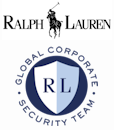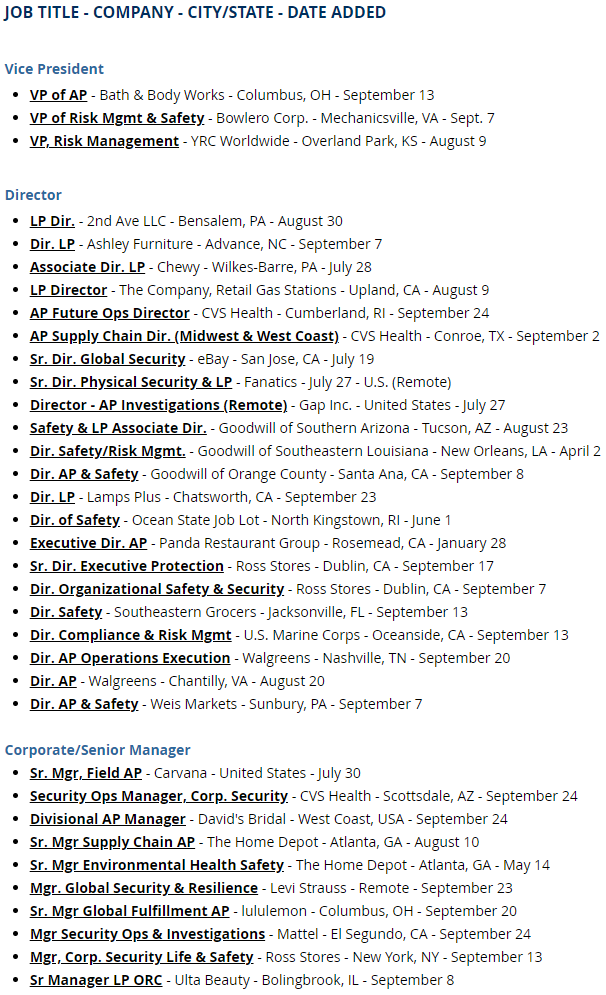The U.S. Crime Surge
The Retail Impact
FBI Releases 2020 Crime Statistics
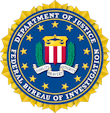 For
the first time in four years, the estimated number of violent crimes in the
nation increased when compared with the previous year's statistics, according to
FBI figures released today. In 2020, violent crime was up 5.6 percent from the
2019 number. Property crimes dropped 7.8 percent, marking the 18th consecutive
year the collective estimates for these offenses declined.
For
the first time in four years, the estimated number of violent crimes in the
nation increased when compared with the previous year's statistics, according to
FBI figures released today. In 2020, violent crime was up 5.6 percent from the
2019 number. Property crimes dropped 7.8 percent, marking the 18th consecutive
year the collective estimates for these offenses declined.
The 2020 statistics show the estimated rate of violent crime was 387.8 offenses
per 100,000 inhabitants, and the estimated rate of property crime was 1,958.2
offenses per 100,000 inhabitants. The violent crime rate rose 5.2 percent when
compared with the 2019 rate; the property crime rate declined 8.1 percent.
These and additional data are presented in the 2020 edition of the FBI's annual
report Crime in the United States. This report is available as
downloadable spreadsheets and topic pages about offenses, arrests, and police
employee data reported by law enforcement agencies voluntarily participating in
the FBI's
Uniform Crime Reporting (UCR) Program.
Of the 18,619 federal, state, county, city, university and college, and tribal
agencies eligible to participate in the UCR Program, 15,897 agencies submitted
data in 2020. A high-level summary of the statistics submitted, as well as
estimates for those agencies that did not report, follows:
●
In 2020, there were an estimated 1,277,696 violent crimes.
When compared with the estimates from 2019, the estimated number of robbery
offenses fell 9.3 percent and the estimated volume of rape (revised definition)
offenses decreased 12.0 percent. The estimated number of aggravated assault
offenses rose 12.1 percent, and the volume of murder and nonnegligent
manslaughter offenses increased 29.4 percent.
●
Nationwide, there were an estimated 6,452,038 property crimes. The
estimated numbers for two of the three property crimes showed declines when
compared with the previous year's estimates. Burglaries dropped 7.4 percent,
larceny-thefts decreased 10.6 percent, while motor vehicle thefts rose 11.8
percent.
●
Collectively, victims of property crimes (excluding arson) suffered
losses estimated at $17.5 billion in 2020.
●
The FBI estimated law enforcement agencies nationwide made 7.6
million arrests, (excluding those for traffic violations) in 2020.
●
The arrest rate for violent crime was 147.9 per 100,000 inhabitants,
and the arrest rate for property crime was 267.3 per 100,000 inhabitants.
●
By violent crime offense, the arrest rate for murder and
nonnegligent manslaughter was 3.8 per 100,000 inhabitants; rape (aggregate total
using the revised and legacy definition), 6.3; robbery, 21.0; and aggravated
assault, 116.8 per 100,000 inhabitants.
●
Of the property crime offenses, the arrest rate for burglary was
45.7 per 100,000 inhabitants; larceny-theft, 193.1; and motor vehicle theft,
25.5. The arrest rate for arson was 3.0 per 100,000 inhabitants.
●
In 2020, 13,377 law enforcement agencies reported their staffing
levels to the FBI. These agencies reported that, as of October 31, 2020, they
collectively employed 696,644 sworn officers and 309,135 civilians-a rate of 3.4
employees per 1,000 inhabitants.
●
Full Report: The downloadable files of Crime in the United
States, 2020, are available on the
UCR's Crime Data Explorer.
●
Resources
Uniform Crime
Reporting (UCR) Program
FBI: Killings soared nearly 30 percent in 2020, with more slayings caused by
guns
Killings in the United States jumped nearly 30 percent last year,
according to FBI data released Monday that indicate a growing number of
gun-related slayings amid the pandemic.
The FBI said murder and manslaughter rose 29.4 percent - the largest
one-year increase since such the federal government began compiling national
figures in the 1960s. That historic increase
has been known for some time, and has sparked concern from police officials
and prosecutors. But the FBI release of data compiled from thousands of law
enforcement agencies formally confirms the trend.
Overall, violent crime rose 5.6 percent in 2020, while property crimes
fell 7.8 percent, the FBI said. Assaults increased 12 percent,
according to the bureau.
Criminologists and police officials have been studying the possible explanations
for the sudden sharp increase in killings - from societal changes due to
coronavirus, to policing, to increased gun sales. So far this year,
officials are seeing a further increase in homicides, but not as pronounced as
last year.
fbi.gov
Gun Violence Archive: Mass Shootings Up 127%
Over 7 Years - 2014 to 2020
With 9 months reporting in 2021 current trend shows
mass shootings up 14.7% over 2020
& 160.5% over 2014
Mass Shootings 2014 2015 2016 2017 2018 2019 2020 2021
Number of incidents: 269 335 382 346 336 417 611 526 to date
58.4 monthly x 12
= 701 total year
Mass
Shooting Methodology and Reasoning
Mass Shootings are, for the most part an American phenomenon. While they are
generally grouped together as one type of incident they are several with the
foundation definition being that they have a minimum of four victims shot,
either injured or killed, not including any shooter who may also have been
killed or injured in the incident.
gunviolencearchive.org
Grocery Stores Under Fire - Making the Headlines
Grocery workers have borne the brunt of the pandemic.
Now supermarket shootings
are on the rise.
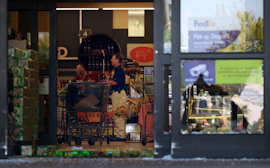 According
to data from the Federal Bureau of Investigation, shootings at grocery stores
have risen in recent years. Between 2000 and 2020, 78 people were killed
in 28 such incidents,
FBI data shows.
According
to data from the Federal Bureau of Investigation, shootings at grocery stores
have risen in recent years. Between 2000 and 2020, 78 people were killed
in 28 such incidents,
FBI data shows.
While some of the shootings were at smaller markets or convenience stores in gas
stations, major chains such as Walmart and Kroger have experienced multiple
shootings at their locations since 2018. Earlier this year, a
gunman killed 10 people at a King Soopers outlet, owned by Kroger, in
Boulder, Colo.
For grocery workers,
the threat of violence adds to a growing list of hazards they have faced
during the pandemic, from an
increased risk of coronavirus infection to belligerent customers
refusing to wear masks.
When a shooting like the one on Thursday at Kroger occurs, grocery workers
"can't help but identify with it," said Wright. "At a certain point, these
cumulative stressors start to take a toll on your coping ability."
For Kroger in particular, it has been a devastating year. In March, an
employee opened fire at one of the company's
distribution centers in Wisconsin, killing two of his colleagues before
turning the gun on himself. Just five days later, a gunman stormed into the
Kroger-owned store in Boulder. The dead included three Kroger employees, six
customers and a police officer.
Continue Reading
Kroger Employees Were Warning Each Other About Last Thursday's Employee Shooter
Washington Post Story Says There Were Warning Signs
- But Hindsight is Always 20/20
As gun violence spreads to small towns, one suburb contends with a mass
shooting's aftermath
A mass shooting on Thursday at a Kroger supermarket in Collierville, at
least the third to happen at a grocery store in recent months, killed one person
and wounded more than a dozen. The gunman, identified by police as UK Thang,
committed suicide. It comes amid an already terrible year for gun violence
nationwide.
A Washington Post analysis of data from
the Gun Violence
Archive, a nonprofit research organization, found that gunfire killed
more than 8,100 people in the United States in the first five months of this
year, about 54 lives lost per day - a rate higher than the average
toll during the same period of the previous six years. The number of gunfire
deaths has increased in suburban and rural areas, though the overall
numbers are lower because of smaller populations.
Gun violence experts took note of the muted response to the Tennessee attack:
The nation relatively ignored a shooting at a grocery store that had the
potential to be far worse than it already was. In the case of the Atlanta-area
spa shootings and the grocery store attack in Boulder, Colo., this year,
lawmakers, advocates and the media sprung into action, writing hundreds of
stories, introducing new legislation and reigniting public debate over gun laws.
Lawanda Clark has worked for Kroger for 17 years but transferred to the
supermarket in May, after an intimidating incident at another store in Memphis.
Co-workers warned her not to talk to the man behind the sushi counter, UK Thang,
who had a reputation for unfriendliness and pulling down his face mask to
cough on colleagues he disliked. Another employee, Jean Kurzawski, 82, who
works in the produce section, said she found Thang's behavior odd but
didn't think of him as violent. "If he didn't like anybody, he'd do strange
things to them," she said. "But he never did anything to me.
On Thursday morning, Thang got into a confrontation with a co-worker,
coughing and swearing at him. One of the store's supervisors fired Thang
and escorted him out after threatening to call police if he did not leave,
they said. He returned hours later, opening gunfire at around 1:30 p.m., police
said. Officers descended on the supermarket four minutes later, and found Thang
dead from a self-inflicted gunshot wound, police said.
washingtonpost.com
It's Official: CA Cities Backtracking on
Cutting Police Budgets
Cities crack down on crime, protests
As Newsom decides whether to sign a package of bills that would reform
California's criminal justice system - such as by creating a process to
yank badges from bad cops, offering
greater access to police records and protecting
protesters from rubber bullets - some of the cities that slashed law
enforcement budgets in the wake of George Floyd's murder now appear to be
backtracking amid an
uptick in homicides and violent crime.
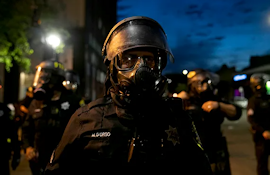
On Wednesday,
San Francisco Mayor London Breed announced a plan to crack down on organized
retail theft by hiring more police investigators and community ambassadors and
upgrading an online crime reporting system.
On Tuesday - a day after Oakland saw its 100th homicide of the year -
the city council voted to fund a new police academy and to study adding
another one next year.
Also Tuesday,
the Los Angeles City Council signed off a new law that limits protesters'
ability to gather outside private residences and forbids people from carrying
certain items, such as knives and pepper spray, in city buildings.
Many protests are "completely out of control. ... This
is about protecting our family members, our children and our neighbors from
aggressive, targeted protests at all hours of the day and the night." -
Los Angeles City Council President Nury Martinez
saobserver.com
EN: Question now is will the two progressive DA's in LA and the Bay
prosecute the ORC suspects or just toss them out? But at least the cities have
awakened to the harsh reality of crime in their front yards and ORC gangs
terrorizing store associates. Just my thoughts. -Gus Downing
&uuid=(email))
CDC & OSHA on Return-To-Work
CDC: Federal Contractors Must Be Vaccinated by Dec. 8
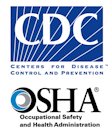 Federal
contractors have to be vaccinated against COVID-19 by Dec. 8, the Biden
administration announced
in guidance Sept. 24.
Federal
contractors have to be vaccinated against COVID-19 by Dec. 8, the Biden
administration announced
in guidance Sept. 24.
Steps Private-Sector Employers Can Take - Recommends hazard assessments for
all jobs
The anticipated emergency temporary standard (ETS) for private-sector employers
with at least 100 employees-requiring vaccination or testing-has not yet been
released, but employers can take certain steps now to prepare. Employers can
start by encouraging all employees to get vaccinated to make compliance easier
once the rule goes into effect, said Ashley Brightwell, an attorney with Alston
& Bird in Atlanta.
shrm.org
Most Popular COVID-19 articles & resources in SHRM last week -
New OSHA Guidance Clarifies Return-to-Work Expectations -
shrm.org
OSHA Publishes - Return-to-work
booklet
CDC also has some
useful guidelines on returning to work and practices to implement. Similar
to the OSHA guidelines, but two that stand out:
●
Improving ventilation in the building by opening windows when
possible or increasing the percentage of outdoor air used in HVAC systems.
Employers should also consider running the ventilation system even when the
building is unoccupied and adding portable high-efficiency particulate air (HEPA)
filtration systems to enhance air cleaning.
●
A ban on hugs, handshakes and fist bumps and the elimination of coffee
pots and other shared items. The CDC said employers should offer commuters
parking subsidies or other incentives to encourage use of personal vehicles
instead of public transit.

The information provided by OSHA is more guidance than requirements, and
employers need to assess their own situations to meet the General Duty Clause
to provide a safe and healthful workplace that is free from serious
recognized hazard.
Not only will implementing safe practices be necessary, but how your
organization communicates these practices to your employees, including
training and providing a point of contact for questions, will be incredibly
important. In addition, employers should continue to emphasize social
distancing; workplace flexibilities such as telework; and basic hygiene,
including handwashing and disinfection of surfaces.
aemcpas.com
COVID Update
390.1M Vaccinations Given
US: 43.7M Cases - 706.3K Dead - 33.1M Recovered
Worldwide:
232.6M Cases - 4.7M Dead - 209.2M Recovered
Former Senior Loss Prevention Executive
Know of any fallen LP exec? Let's remember &
recognize.
Private Industry Security Guard Deaths: 315
Law
Enforcement Officer Deaths: 422
*Red indicates change in total deaths
COVID Cases by Region Since July
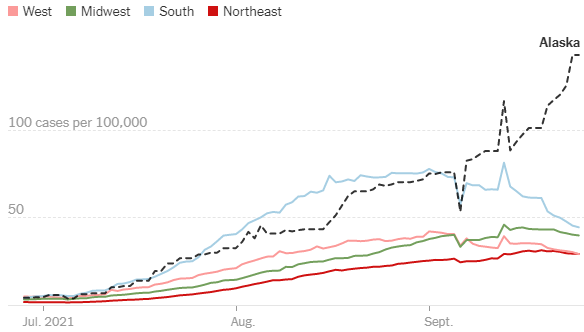
60 Million to Get Booster Shots
States Begin a Complex Booster Shot Rollout for Pfizer Recipients
WASHINGTON - State health officials rushed on Friday to roll out campaigns to
provide coronavirus booster shots for millions of vulnerable people who got the
Pfizer-BioNTech vaccine and to help a confused public understand who qualifies
for the extra shots.
Among their challenges: making sure that recipients of the Moderna and Johnson &
Johnson vaccines know that they are not yet eligible for boosters, reaching
isolated elderly people and informing younger adults with medical conditions or
jobs that place them at higher risk that they might be eligible under the broad
federal rules.
After Dr. Walensky's announcement, President Biden said 20 million people
could get boosters immediately because they had gotten their second Pfizer-BioNTech
shot at least six months ago. In all, he said, 60 million people will be
eligible for a Pfizer-BioNTech booster over the coming months.
Pharmacies are providing roughly 70 percent of coronavirus vaccinations
as of this week, according to the C.D.C. Mr. Biden said booster shots would
be available at 80,000 locations around the country, including more than
40,000 pharmacies. CVS, Walmart and Sam's Club said Friday they're ready to
provide booster shots.
nytimes.com
The Johns Hopkins Pandemic Dashboard is #1
The Rise of the Pandemic Dashboard
Governments around the world have created online tools for the public to view
the latest data on Covid-19, but some platforms are better than others.
The resulting platforms - while sometimes flawed because of incomplete data,
technology constraints or just awkward presentation - have become a mainstay
of the pandemic. They've helped people assess risk and understand what's
happening near them. And, thanks to the multiple charts and maps available
through these interfaces, they've also contributed in developing data
literacy around the world.
The PHE Covid-19 dashboard provides vaccination, cases and deaths for the
country of England. Originally a team of three, there are now 17 people
working on the Covid-19 dashboard (not all full time.) The dash has gone
through 11 redesigns since its inception and went from being a few line
charts to a full-fledged data hub, with an interactive map where
users can search for the number of cases and vaccinations in their zip code.
The PHE dashboard team faces intense public scrutiny and constant
feedback (their email inbox is always full). And when PHE makes a mistake, it
has to handle and rectify it immediately.
Skyrocketing Dashboard Demand
"All of these dashboards were launched very early in the pandemic," said Damir
Ivankovic, a PhD student at the University of Amsterdam. "Some of them were
developed literally overnight, or over three sleepless nights in certain
countries." With Ph.D. researcher Erica Barbazza, Ivankovic has been leading
a set of studies
about Covid-19 dashboards with a network of researchers. For an upcoming
paper that's still unpublished, the pair have talked to more than 30
government dashboard teams across Europe and Asia to better understand their
dynamics and the political decisions at stake in their creation.
The number of non-corporate businesses using Microsoft Power BI has
skyrocketed during the pandemic, according to lead engineer Arun
Ulagaratchagan. Power BI has been around for about six years, and new features
are released every week. In the software world, that's a lot.
bloomberg.com
Can Companies Have a Hybrid Workplace-and Keep Things Fair?
Some employers are trying to make sure that hybrid
work arrangements don't reverse gains among historically marginalized groups
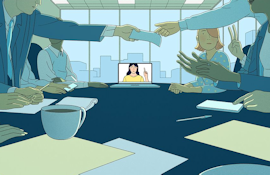 There
will be a new protocol for meetings. If one employee of the
internet-infrastructure company is remote and dialing in via Zoom, everyone in
the office attending that meeting will also dial in.
There
will be a new protocol for meetings. If one employee of the
internet-infrastructure company is remote and dialing in via Zoom, everyone in
the office attending that meeting will also dial in.
The idea might seem counterintuitive: More than 18 months into the pandemic,
many workers are tired of video calls and eager to work in person again. But
there are other factors to consider.
"We want that one person, maybe in New York or London, to have an equitable
experience," says Janet Van Huysse, Cloudflare's chief people officer.
Hybrid work arrangements-a mix of office and remote-have emerged as a popular
model companies plan to adopt once more offices reopen. Flexibility is what most
knowledge workers want, according to surveys. But hybrid work has downsides,
including tensions over whether people who go into the office more will be
perceived as harder workers and have better chances at upward mobility.
Keeping things fair:
Continue Reading
Idaho morgues are running out of space for bodies as covid-19 deaths mount -
Rents refrigerated trailer
Covid cases plateau in D.C., Maryland and Virginia, showing effectiveness of
vaccines, experts say
24 states vow to challenge Biden's vaccine mandate
California has the lowest coronavirus rate in the nation. Here's what we know
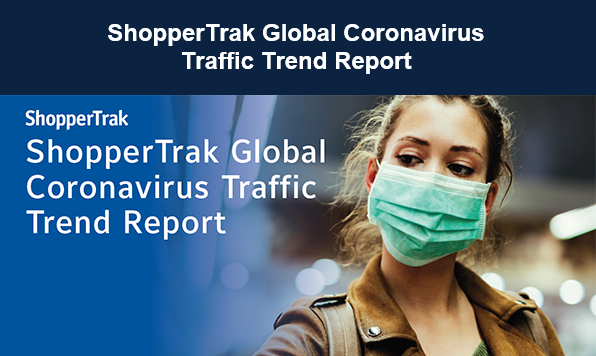
4th Warning in a Week - Grocers - Things May
Be About to Change For the Worse
Bloomberg Article Friday - Same Day as The Daily's 'Panic Buying Warning'
Article
The Return of Empty Shelves and Panic Buying
Supply chain issues are leaving supermarket
shelves empty. Shoppers might yet make things worse.
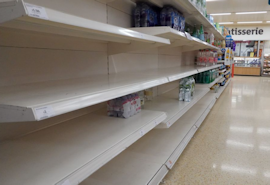 Walk
around a supermarket in the U.S. or Europe and you will see some empty
shelves once more. This isn't due to people panic-buying toilet paper, as
they did early on in the pandemic; rather it's because supply chains are
clogged at almost every stage between Asian factories and grocery stock
rooms.
Walk
around a supermarket in the U.S. or Europe and you will see some empty
shelves once more. This isn't due to people panic-buying toilet paper, as
they did early on in the pandemic; rather it's because supply chains are
clogged at almost every stage between Asian factories and grocery stock
rooms.
But rising prices and patchy availability mean it's only a matter of time
before shoppers start purchasing in bulk again - this time to avoid future
sticker shock.
Supply lines are struggling as producers such as Vietnam, responsible for making
everything from sneakers to coffee, are hurt by Covid restrictions. Surging
virus cases and consumer demand are leading to congested ports. Shipping
containers are in the wrong place. Sea freight costs are up tenfold. If goods do
arrive at the destined ports, there are too few truck drivers to transport them
to retailers. Shortages of workers to harvest and prepare foods are also adding
to the pressures.
In some areas, issues have been compounded by elevated demand. Coffee and
tea are hot commodities as many Americans continue to work remotely.
Beverages, school supplies, pre-packaged Lunchables, snack packs, things that go
in lunchboxes, pet food, dog and cat treats, are all facing shortages.
Energy drinks, eggs, meat and soft drinks are all getting more expensive, IRI's
Consumer Packaged Goods Inflation Tracker shows.
Retailers have been reengineering their supply chains to avoid the pinch points.
Some, including Walmart Inc. and Target Corp., have been chartering their own
ships. Amid a shortage of drivers, some British supermarkets are using their own
trucks for deliveries that previously would have been carried out by suppliers.
Grocers need to plan for the worst. With the system so fragile now, what
would happen with further spikes in prices, demand and
panic-buying?
When prices go up, consumers tend to get proactive and change their
habits. Shoppers first switch out of pricier products to cheaper ones. Then
comes the buying in bulk and crowdsourcing. With food costs expected to rise
further, consumers may choose to load up on products such as pet food
while they can.
Up until now, grocers haven't had a bad pandemic. That may be about to
change.
bloomberg.com
EN: May be time to re-think security strategy and coverage. As this
panic buying warning is showing up in a host of major news outlets.
5th Article & More is Coming
Panic buying leaves up to 90% of fuel pumps dry in major British cities
Up to
90% of British fuel stations ran dry
across major English cities on Monday after
panic buying deepened a supply chain crisis
triggered by a
shortage of 100,000 truckers
that retailers are warning could batter the world's fifth-largest economy.
Just days after Prime Minister Boris Johnson's
government spent millions of pounds to avert a food shortage
due to a spike in prices for natural gas, the biggest cost in fertilizer
production, ministers asked people to refrain from panic buying.
For months, supermarkets, processors and farmers have warned that a shortage of
heavy goods vehicle (HGV) drivers was straining supply chains to breaking point
- making it harder to get goods onto shelves.
reuters.com
Senior Executive Crime
White Collar Crime
Whistleblower Filed Lawsuit Under False Claims Act
CEO & Manufacturing Partner ran the scheme for ten
years
DOJ: Criminal & Civil Charges Filed Against CEO Of Apparel
Company - Engaging In Customs Fraud
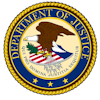 "George
Illulian," the CEO of an apparel online retailer company located in New York,
New York. ILOULIAN was charged with participating in a years-long scheme to
defraud CBP by submitting invoices to CBP that falsely understated the true
value of the goods his company imported into the United States, - evading
the obligation to pay hundreds of thousands of dollars in customs duties.
"George
Illulian," the CEO of an apparel online retailer company located in New York,
New York. ILOULIAN was charged with participating in a years-long scheme to
defraud CBP by submitting invoices to CBP that falsely understated the true
value of the goods his company imported into the United States, - evading
the obligation to pay hundreds of thousands of dollars in customs duties.
ILOULIAN was arrested last Thursday. In addition, a civil fraud lawsuit
against ILOULIAN and his company, DELTA UNIFORMS, INC. ("DELTA"). The
civil complaint asserts that ILOULIAN and DELTA violated the False Claims Act
by misrepresenting the true value and nature of the goods on entry documents
submitted to CBP. The conduct in this matter was first brought to the
attention of federal law enforcement by a whistleblower who filed a lawsuit
under the False Claims Act.
Iloulian now faces criminal charges for his alleged fraud, and the government's
civil suit seeks treble damages and penalties against Iloulian and his company."
"Iloulian allegedly evaded the obligation to pay
hundreds of thousands of dollars in customs duties using a
double-invoicing scheme.
From 2010 through at least in or about 2020, ILOULIAN, and others known and
unknown, including individuals associated with overseas manufacturers.
ILOULIAN is facing a max. of 42 years in prison.
justice.gov
Wholesaler/Retailer Pres. & Manufacturer
Double Invoicing Fraud to Evade Customs
DOJ: Calif. Tobacco President Pled Guilty to Conspiracy to Evade $9M+ Federal
Excise Taxes on Dominican Cigars
President of online retailer & wholesaler of
tobacco and marijuana products
Miami, Florida - A California tobacco company executive admitted his
participation in a fraudulent scheme to avoid the payment of millions of
dollars in excise taxes.
Akrum Alrahib, 43, of Los Angeles, California, was the President of
Trendsettah USA, Inc. ("Trendsettah"), a California tobacco company..
Trendsettah sold various tobacco products, such as large cigars, and marijuana
paraphernalia, such as "blunt wraps," imported from the Dominican Republic
through Miami.
Alrahib partnered with Gitano Pierre Bryant, Jr., a tobacco importer to import
large cigars and agreed to lower their costs by underreporting the Federal
Tobacco Excise Tax. Alrahib paid over $21 million for Dominican tobacco
products and received over $700,000 in kickbacks from Bryant. Alrahib also
admitted his participation in a witness tampering scheme.
Alrahib can be sentenced to up to five years' imprisonment and ordered to pay
restitution. Bryant, Alrahib's partner, was charged in a separate case
(16-cr-20838). He pled guilty, was sentenced to four years in prison, and
ordered to pay over $9 million in restitution.
justice.gov
Huawei's CFO & Founder's Daughter Embroiled in
Bank Fraud & Wire Fraud Charges - Goes Home to China
The Western World is Clamping Down on Huawei
DOJ: Huawei CFO Wanzhou Meng Admits to Misleading Global Financial Institution
Meng Enters into Deferred Prosecution
Agreement to Resolve Fraud Charges
 The
Chief Financial Officer of Huawei Technologies Co. Ltd., Wanzhou Meng, 49, of
the People's Republic of China (PRC), appeared Friday in federal district court
in Brooklyn, entered into a deferred prosecution agreement (DPA) and was
arraigned on charges of conspiracy to commit bank fraud and conspiracy to commit
wire fraud, bank fraud and wire fraud.
The
Chief Financial Officer of Huawei Technologies Co. Ltd., Wanzhou Meng, 49, of
the People's Republic of China (PRC), appeared Friday in federal district court
in Brooklyn, entered into a deferred prosecution agreement (DPA) and was
arraigned on charges of conspiracy to commit bank fraud and conspiracy to commit
wire fraud, bank fraud and wire fraud.
In entering into the deferred prosecution agreement, Meng has taken
responsibility for her principal role in perpetrating a scheme to defraud a
global financial institution," said Acting U.S. Attorney Nicole Boeckmann
for the Eastern District of New York. "Her admissions in the statement of facts
confirm that, while acting as the Chief Financial Officer for Huawei, Meng
made multiple material misrepresentations to a senior executive of a
financial institution
regarding Huawei's business operations in Iran
in an effort to preserve Huawei's banking relationship with the financial
institution.
Since her arrest, global pressure on Huawei has intensified. The company has
long faced scrutiny by the U.S., which has effectively blocked the company from
installing its telecom equipment in major U.S. networks because of
concerns that its gear could be used to spy on Americans,
suspicions Huawei forcefully rejects.
On Wednesday, The Wall Street Journal reported that
federal prosecutors are
pursuing criminal charges against Huawei for allegedly stealing trade
secrets from U.S. business partners.
A day later,
a German government official
said the country is
exploring ways to ban the use of Huawei products
in its telecommunications infrastructure, and has also found itself under
intensifying scrutiny from multiple Western governments.
justice.gov
wsj.com
EN: Within hours she was on a plane to China after spending three
years in her two multimillion dollar homes in Vancouver with an 11 pm curfew,
watched around the clock by a security detail and wearing an ankle bracelet
monitor, and fighting extradition to the U.S. And the Chinese released the two
Canadian executives they were holding in retaliation almost at the same time.
Meanwhile Republican Lawmakers Keep Up the
National Security Fight
Lawmakers Share Huawei Concerns with US State Department
Republican lawmakers have expressed additional concerns around Chinese
telecommunications giant Huawei to the nation's top diplomat. In a letter to
Secretary of State Antony Blinken, Sen. Tom Cotton, R-Ark., and Rep. Mike
Gallagher, R-Wis., outline the global proliferation of Huawei's cloud services
and request answers on the Biden administration's handling of the company, long
believed to be tied to the Chinese Communist Party, or CCP, and previously
sanctioned by U.S. agencies.
govinfosecurity.com
China Basically Legalizes Intellectual
Property Theft
China Wields New Legal Weapon to Fight Claims of Intellectual Property Theft
A Delaware firm preparing to sue a Chinese
smartphone maker for patent infringement was beaten to the punch with anti-suit
injunction
Chinese technology giants have seized on a new legal tactic to fight claims
of intellectual property theft, raising
concerns in the U.S. that Beijing's promises to strictly enforce patent
and copyright laws will be undermined by Chinese courts.
In four major cases since 2020, Chinese courts granted so-called anti-suit
injunctions blocking foreign companies from taking legal action anywhere in
the world to protect their trade secrets.
Three of the rulings were in favor of Chinese telecom companies-Huawei
Technologies Co., Xiaomi Inc. and BBK Electronics. The fourth supported
South Korea's Samsung Electronics Corp. in a dispute with Swedish telecom giant
Ericsson AB. (EN: Huawei is at the top of the list folks).
Xiaomi, the world's biggest smartphone maker, has sold millions of handsets
using InterDigital patents since 2013, a Delaware firm that holds patents on
wireless and digital technology used in smartphones, under industry practice
that allows companies to sell while licensing fees are being negotiated.
Xiaomi, was recently granted an anti-suit injunction against InterDigital Inc.
Meaning they'll lose all licensing fees in the millions.
To trade lawyers and others who have tangled with Chinese companies over
intellectual property, the InterDigital case is the latest sign of how China
disregards the patents, copyrights and trade secrets of foreign companies.
U.S. companies have long complained about Intellectual property theft by Chinese
companies. When the Trump administration initiated the U.S.-China trade war in
2018, it used a report on China's intellectual property theft as the initial
legal justification for the tariffs. It estimated that theft or underpayment was
harming U.S. companies by about $50 billion annually.
The Chinese courts also asserted jurisdiction over patent licensing fees
globally, in what attorneys say is a break from standard practice in the West.
wsj.com
Any Executives traveling to China over the
next few months? Update Risk Assessments?
You may disagree with me but there's just to much
pressure and conflict right now
China Detains Business Chiefs as Its Corporate Crusade Expands
New Goal of "Common Prosperity" Replacing
Communist Party's Private Sector Tolerance
BEIJING - China has kicked up its campaign to tame its free-spending, debt-laden
companies, as the authorities punished the corporate chiefs of two troubled
companies while letting a troubled property giant continue to struggle under the
weight of more than $300 billion in debt.
&uuid=(email)) The
authorities in China have taken into custody and police have seized the top
two executives of HNA Group, a transportation and logistics conglomerate
that bought up businesses around the world before quickly collapsing under heavy
debts. One of which appears to be a U.S. citizen.
The
authorities in China have taken into custody and police have seized the top
two executives of HNA Group, a transportation and logistics conglomerate
that bought up businesses around the world before quickly collapsing under heavy
debts. One of which appears to be a U.S. citizen.
They also held two Canadian executives and
convicted one of them for espionage in retaliation for the
U.S. charging Huawei's CFO and founder's daughter for financial fraud
and trying to extradite her from Canada, and Canada going along with it. Having
just resolved this Friday, China
frees the two Canadian executives within hours of Hauwei's CFO release.
Over the last year Jinping has executed one top executive for misdeeds,
pulled the reins back on Alibaba's Jack Ma - with him disappearing for three
months and all of this on the backdrop of pressure on corporate practices that
the Chinese Communist Party increasingly regards as dangerous to the economy and
its own grip on power. And demanding firms contribute extensively more to the
party.
Xi Jinping, the country's top leader, has ordered businesses to pay greater
heed to the government. Legislation
approved two years ago requires domestic and foreign companies alike to
share extensive information about their operations in China with the government.
All but the smallest domestic and foreign companies must have Communist Party
cells now. By Gus Downing &
nytimes.com
EN: With buyers and executive travel going to China it may be wise to
update risk assessments and for senior exec's possibly review security strategy.
There's just a lot going on in every sector, with cybersecurity weighing heavily
as well. BTW Friday China outlawed cryptocurrencies as illegal transactions.
Just some thoughts. -Gus Downing
Getting Facial Recognition Bias to Zero
DHS suggests face biometrics bias reduction method, quantifies demographic
effects
Removing facial features associated with race and gender can make face biometric
algorithms less likely to confuse people with others based on those
demographics, according to new research from the U.S. Department of Homeland
Security.
The paper 'Quantifying
the Extent to Which Race and Gender Features Determine Identity in Commercial
Face Recognition Algorithms' reveals the finding that race and gender
sameness contributes about 10 percent to the variation of face biometric
similarity scores.
biometricupdate.com
FBI Tech Chief Applauds FR Vendors: 'Possibly
Eliminating Bias in Facial Rec.'
NGI delivers faster results from more biometric modalities with no
shopping mall storage
FBI biometrics no longer fill a defunct shopping mall, and requests no longer
take months to process, but contactless fingerprints remain a challenge for the
next-generation identification (NGI) system the agency now uses, attendants of
the latest
Security Industry Association event heard.
Gary Stroupe, acting assistant section chief, FBI Criminal Justice
Information Services (CJIS) Biometric Services Section, delivered a
presentation during the third installment in the SIA Identity and Biometric
Technology Advisory Board's (IBTAB's) webinar series with customer agencies.
Stroupe is the operational lead for the FBI's transition from IAFIS to its NGI.
The launch of NGI allowed the agency to scale its biometric operations and
deliver timely results, but also expands the modalities it uses beyond
fingerprints.
CJIS'
NGI serves more than 18,000 law enforcement agencies and 17,000 non-criminal
justice agencies, and currently holds almost 140 million fingerprint
identities.
The system has processed more than 35 million fingerprint checks so far this
year, or around 117,000 per day, which is significantly reduced from pre-COVID
numbers, Stroupe says.
The average turnaround time on a biometric match request is just over four
and a half minutes for police, and around twice as long for civil checks.
Latent and partial print results are typically returned in less than 30 minutes.
One of the key benefits of NGI is a much higher matching accuracy for latent
prints, according to Stroupe.
While NGI includes newer biometric modalities like iris recognition, palm
prints, which Stroupe says make up roughly 30 percent of all latent prints
collected at crime scenes, were also added with the transition beyond IAFIS. NGI
now includes some 24 million palm print biometric records.
He also lauded the efforts of biometrics vendor community in reducing,
possibly even eliminating bias in facial recognition algorithms.
biometricupdate.com
Stop & Shop to Close Nearly 2 Dozen Store Pharmacies
Hy-Vee begins test of shelf-scanning robot Tally in 5 stores
Quarterly Results
Lululemon Q2 Canadian only sales up 46.9%
Canada's Roots Q2 sales up 6.6%
Zumiez Canada's Q2 sales down 17.6%
Last week's #1 article --
Kroger Joins Buy Safe America Coalition
Kroger joins effort to protect businesses, consumers from ORC
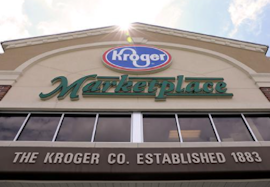 The
Kroger Co. has joined the Buy Safe America Coalition
in an effort to help combat organized crime.
The
Kroger Co. has joined the Buy Safe America Coalition
in an effort to help combat organized crime.
The coalition is
a diverse group of retailers, consumer groups, manufacturers and law enforcement
who support efforts to combat organized retail crime
and protect consumers and communities from the sale of counterfeit and stolen
goods.
Store employees have also been put at as
organized retail crime rings become increasingly violent and brazen.
The surges have spurred businesses to take swift action to protect both
employees and customers.
Kroger has been at the forefront of efforts to stop organized retail crime, and
has
a
designated crime unit dedicated to preventing these sprees.
Kroger has initiated over 2,000 ORC cases, and trains hundreds of thousands of
its associates to better understand and recognize instances of organized retail
crime.
chainstoreage.com

&uuid=(email))
&uuid=(email))
&uuid=(email))
&uuid=(email))
&uuid=(email))

&uuid=(email))

&uuid=(email))

&uuid=(email))

&uuid=(email))
&uuid=(email))
&uuid=(email))
&uuid=(email))

&uuid=(email))
&uuid=(email))
&uuid=(email))


&uuid=(email))
&uuid=(email))
&uuid=(email))
&uuid=(email))
&uuid=(email))
&uuid=(email))
&uuid=(email))
&uuid=(email))
&uuid=(email))












&uuid=(email))
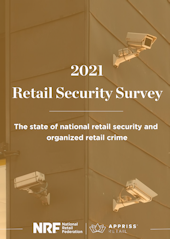
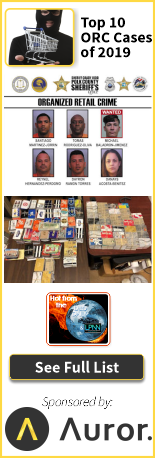
&uuid=(email))
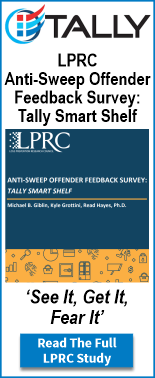
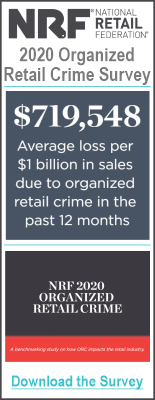





&uuid=(email))

&uuid=(email))

 For
the first time in four years, the estimated number of violent crimes in the
nation increased when compared with the previous year's statistics, according to
FBI figures released today. In 2020, violent crime was up 5.6 percent from the
2019 number. Property crimes dropped 7.8 percent, marking the 18th consecutive
year the collective estimates for these offenses declined.
For
the first time in four years, the estimated number of violent crimes in the
nation increased when compared with the previous year's statistics, according to
FBI figures released today. In 2020, violent crime was up 5.6 percent from the
2019 number. Property crimes dropped 7.8 percent, marking the 18th consecutive
year the collective estimates for these offenses declined.

&uuid=(email))







&uuid=(email))

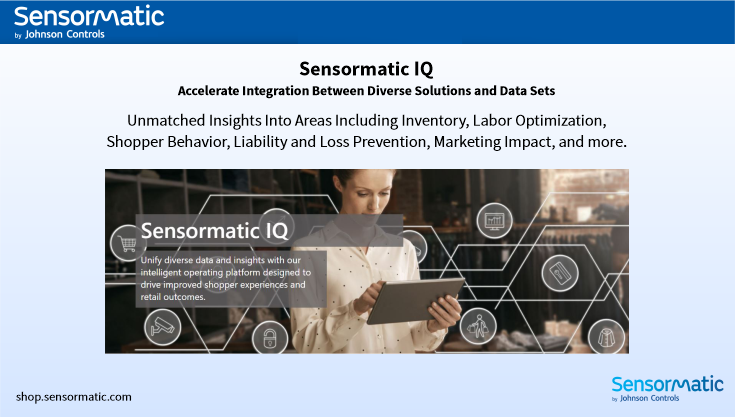

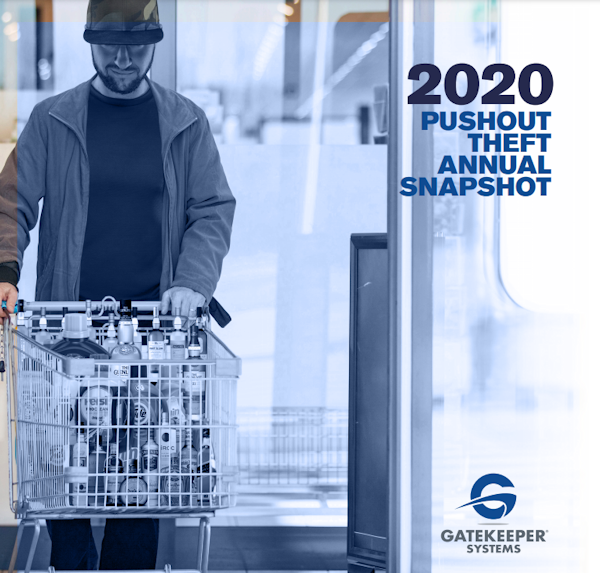


&uuid=(email))



&uuid=(email))
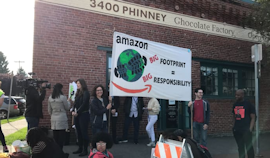
&uuid=(email))
&uuid=(email))

 This
conference is a collaboration between six western ORCAs from Arizona,
California, Idaho, Oregon, Nevada, and Washington, two state retailer
associations, Washington and California, along with Auror. Over two mornings we
bring you expert speaker on current topics effecting both law enforcement and
retail in our collaborative effort to battle ORC.
This
conference is a collaboration between six western ORCAs from Arizona,
California, Idaho, Oregon, Nevada, and Washington, two state retailer
associations, Washington and California, along with Auror. Over two mornings we
bring you expert speaker on current topics effecting both law enforcement and
retail in our collaborative effort to battle ORC. f%20(1).png)
&uuid=(email))

&uuid=(email))
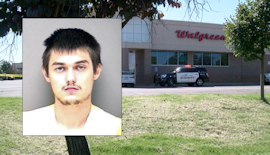
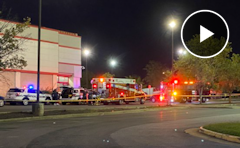

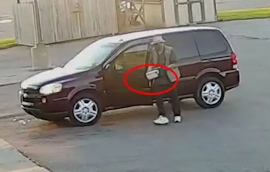
&uuid=(email))
&uuid=(email))
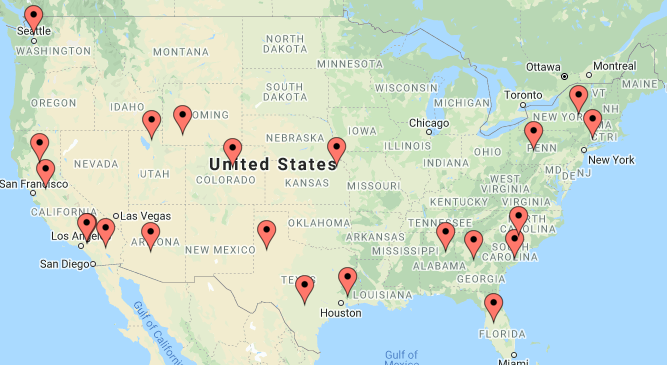
&uuid=(email))
&uuid=(email))

&uuid=(email))




